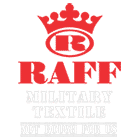Discover the 3 functions of the military uniform!
Since its appearance, the military uniform has always had three main objectives, protection, functionality, and identification. Over the decades, fighters wore protective clothing and armor, but since the Middle Ages, military forces began to normalize their outfits until we got what is nowadays called military uniforms.
Indeed, military uniforms fulfill three key functions:
- Protection: to protect his territory, the soldier must first be protected through solid clothing that is resistant to the potential risks he may face. Such as projectiles, explosions, toxic chemicals and gases, extreme environments, and radiation.
- Functionality: Army forces have challenging missions. To help them perform them quickly, efficiently and with minimum energy, the experts have designed the military uniforms with high caliber fabric, features that exceed normal clothes, adapted to the assigned tasks, to the areas of operations and the climate.
- Identification: This is the purpose of the first military uniforms; identify the fighters. On the battlefields, we can meet soldiers who are not part of the official army, and therefore they should not be protected by the law of war. In addition, they also help to distinguish between friendly soldiers and enemy soldiers.
All military textile professionals have agreed on these three functions. However, they were faced with a dilemma: is comfort necessary for a fighter? This question was at the heart of the debates for a long time. Certainly, the military uniform allowed soldiers to work normally, protect themselves, and identify each other. However, some shortcomings have emerged throughout its use.
We are referring to heat stress and profuse sweating which impairs visual, cognitive, and physical performance. And that is the result of low moisture permeability. We can also mention skin irritations caused by abrasive materials. These can give rise to psychological discomfort that influences motivation and team spirit during high-risk missions.
These are just a few examples that illustrate how the military uniform can influence the performance of soldiers if it was not comfortable. And this is what has prompted professionals to consider comfort an essential criterion in the military textile sector. Soldiers stay in these military uniforms for consecutive hours, training, clearing grounds, moving military equipment, and many other tasks that typically rely on the feet. Therefore, taking care of your feet guarantees a less exhausting and more efficient daily military life.
At this level, we have dealt with the different functions of the military uniform and what makes it essential for a soldier.
